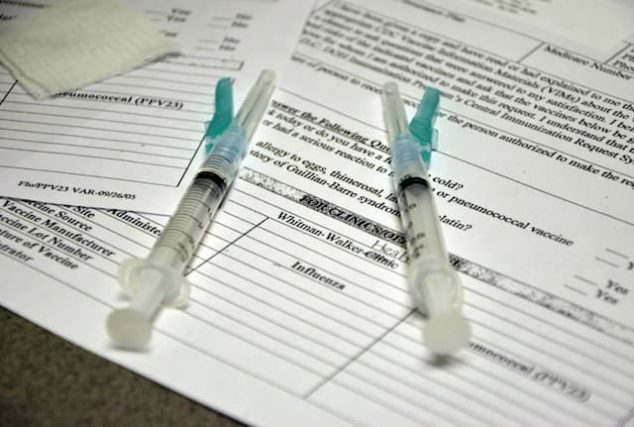Laboratories have nearly doubled their flu vaccine orders for next winter, as governments worry about the second wave of Covid-19.
The global vaccine manufacturers against the flu produced a record number of doses for the 2020-2021 season, the authorities hoping to relieve the sick in hospitals flu while a rebound pandemic Covid-19 is expected.
Orders that have doubled in one year
For the 330 million Americans alone, a total of 194 to 198 million doses of vaccine will be produced this season, up from 175 million last year, an 11% increase, according to the Centers for Prevention and Control. diseases (CDC).
The giant network of pharmacies CVS, where vaccination is done without a prescription, has ordered double the doses compared to 2019, or 18 million.
The manufacturer Seqirus expects 15% additional production (60 million doses against 52), just like Sanofi (80 million against 70). Globally, the French group recorded an increase of 20%.

“We have received tremendous demand from our customers,” says Michael Greenberg, medical officer for vaccines in North America at Sanofi Pasteur, which is one of the big three manufacturers along with Seqirus and GSK.
Sanofi shipped its first batches on July 22nd, three weeks earlier than in 2019.
The flu threat obscured by Covid-19
The flu killed between 24,000 and 62,000 people in the United States last year. By helping to free up hospital beds, influenza vaccination is seen as one of the public health measures to cushion the other epidemic, that of Covid-19.
“I am very worried about the fall,” says Lawrence Gostin, of Georgetown University, who called in the medical journal Jama for a very offensive vaccination campaign, or even compulsory vaccination in schools.
People don’t think of the flu, they only think of Covid.
A weak vaccination campaign in France
Americans are already among the most vaccinated in the world against influenza: vaccination is recommended from the age of six months, when other countries, including France, recommend it to people at risk of complications, including those over 65 years.
As a result, 63% of children and 45% of American adults were vaccinated in 2018-2019 – and 68% of those over 65 – compared to half in France.
But this year, Americans are going to have to change their ways. “A lot of people are normally vaccinated at work or on campus, but a lot of businesses or schools are closed,” warns Lawrence Gostin.
Upstream preparation
The industry is running in: in February and March, the World Health Organization (WHO) and national health authorities select the four strains of influenza virus most likely to be in circulation the following winter in the region. northern hemisphere.

Hundreds of millions of eggs – the traditional medium for incubating viruses before inactivating them and making them into vaccines – are delivered to laboratories, then production continues throughout the spring until the syringes are filled in the summer. .
For Sanofi in the United States, everything happens in two factories in Pennsylvania and in New York State. The same ones who could produce a future vaccine against the new coronavirus.
Read also: Putin says Russia has an effective vaccine against Covid-19
Barriers against influenza
But for now, there is no competition, says Michael Greenberg, and the US government has given the group $ 2 billion to expand its production lines anyway.
“We have everything we need and we are working closely with our vial and syringe suppliers for the next few years,” said Dave Ross, Director of Commercial Operations for Seqirus in North America, regarding glass and others. distribution materials that will be essential for future anti-Covid vaccines.
An optimistic scenario is also possible for the winter: barrier gestures and wearing a mask should reduce the incidence of all respiratory viruses, including those of influenza.
“We hope this all pays dividends, and that there will be less flu,” says Henry Bernstein of the Hostra / Northwell School of Medicine, also a member of the Advisory Council on Immunization Practices.




